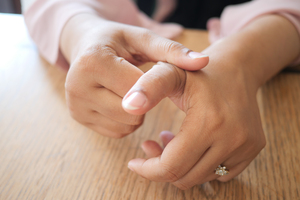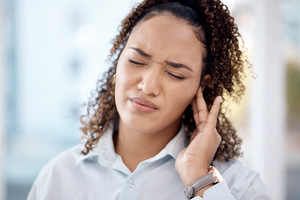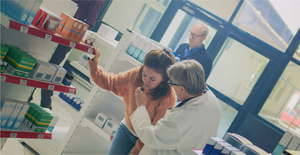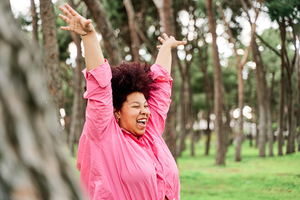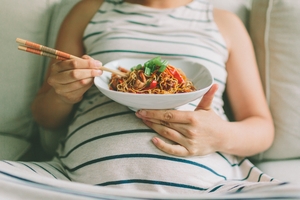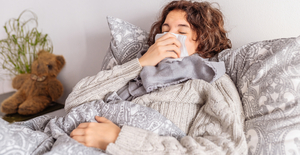Varicose Veins Treatment
Varicose veins are a highly common condition that can cause discomfort and affect your appearance, says the National Institutes of Health (NIH). Knowing what causes varicose veins and how to treat them effectively can help you stay healthy and comfortable and reduce your risk of related complications.
What are varicose veins?
Varicose veins are swollen, enlarged veins you can see under your skin. The NIH says varicose veins usually appear in the legs, but that they can develop anywhere on the body.
Varicose veins are more common in women than in men and do not cause health or medical problems for most people, adds the NIH. However, some people with varicose veins may experience pain and swelling at the vein site, along with blood clots and skin changes, according to the NIH.
The NIH notes that varicose veins can often be effectively managed with self-care and lifestyle changes, though treatments are available for people who want to reduce the appearance of their veins or prevent them from getting worse. See your doctor if you are concerned about your varicose veins and want to learn more about your available treatment options.
Causes of varicose veins
Varicose veins occur when a valve in one or more veins stops working properly and causes blood to flow back up into the veins. The affected veins become swollen due to the buildup of blood and result in varicose veins, reports the NIH.
Anyone can develop varicose veins, though certain factors may increase your risk. Risk factors for varicose veins, according to the NIH, include:
- Older age
- Being female
- Pregnancy, especially multiple pregnancies
- Family history of varicose veins
- Obesity
- Standing or sitting for long periods
- Being born with defective vein valves
- History of deep vein thrombosis
Symptoms of varicose veins
You can detect symptoms of varicose veins on your own or visit your doctor for an examination and diagnosis.
Common varicose veins symptoms, according to the NIH, include:
- Visible, bulging, swollen veins
- Feeling of heaviness or fullness in the legs
- Fatigue in the legs
- Mild tenderness
- Itching
- Restless leg symptoms
- Mild swelling of the feet or ankles
- Veins that are bluish in color
- Changes in skin color
- Difficulty exercising
- Spider veins on legs that can be seen on the surface of the skin
- Cramping in the thigh or calf, usually at night
Your varicose veins symptoms may worsen when you stand or sit for long periods of time. The NIH says these symptoms may include:
- Swelling in the legs
- Pain in the leg or calf
- Skin that is dry, irritated, scaly, and cracks easily
- Skin sores and ulcers that do not heal
- Changes to skin color in the legs or ankles
- Thickening and hardening of the skin in the legs and ankles
Diagnosing varicose veins
Varicose veins can usually be diagnosed by a dermatologist, which is a doctor who specializes in skin, hair, and nail health. A dermatologist can examine your veins and talk to you in greater detail about your symptoms, lifestyle, family history, and activity levels, reports the NIH.
During the exam, your dermatologist will evaluate how blood flows through your veins and rule out other potential problems, such as blood clots. The NIH adds that your doctor may use ultrasound, X-ray, or computed tomography (CT) scan procedures to diagnose varicose veins and spider veins on legs.
Treating and preventing varicose veins
Varicose veins can often be effectively treated, especially if they are causing pain or you do not like their appearance, according to the NIH. Varicose veins may also be prevented in certain instances, such as when they are being caused by obesity or sitting for long periods, reports the NIH.
You may be able to help treat and prevent varicose veins by changing your lifestyle, using compression garments, or having surgery on the affected veins, reports the NIH.
Lifestyle changes
Start exercising regularly, as exercise can encourage healthy and proper blood flow through your veins. The NIH recommends consulting with your doctor before doing any strenuous or vigorous exercises, which could make varicose veins worse.
Maintain a healthy weight, given how obesity is a risk factor for varicose veins. Avoid sitting or standing for long periods, as this can lead to reduced blood flow. The NIH recommends raising your legs above your heart for 15 minutes at a time three to four times a day to prevent varicose veins.
Moisturize the skin on your legs regularly if it is dry or cracked. Ask your dermatologist about the best skincare products to use on your skin, as the NIH reports that some skincare treatments may worsen varicose veins.
Compression
The NIH notes that compression stockings may decrease the swelling of veins in your legs by helping blood flow back toward your heart. The NIH suggests wearing thigh-high compression stockings if you can tolerate them. Otherwise, compression stockings that reach the level of your upper calf should be effective at improving mild symptoms of varicose veins.
Surgery
A surgery called phlebectomy may be performed to remove problematic varicose veins that lie just beneath the surface of your skin, reports the NIH and U.S. Department of Health and Human Services (DHHS). During phlebectomy, your doctor will make a series of small cuts in your leg near the damaged veins and remove the veins through the cuts.
Surgical ligation and stripping may be performed on larger varicose veins, reports the DHHS. During this procedure, your doctor will close the problematic veins before removing them from your leg through tiny cuts in the skin. Recovery usually takes up to one month, and healthy veins will eventually take over the normal flow of blood, adds the DHHS.
Other treatment options
Sclerotherapy, laser therapy, and closure systems are other common treatments for varicose veins, says the NIH and DHHS.
During sclerotherapy, your doctor will inject a chemical into the varicose vein that causes the vein to harden, turn into scar tissue, and eventually disappear. Sclerotherapy is usually used to treat small varicose veins and spider veins, reports the DHHS.
During laser therapy, strong bursts of light are sent through your skin to the varicose vein, which causes it to gradually fade and disappear. If you have a large, bulging varicose vein, your doctor may insert a small tube into the vein that heats the vein to close it off. Laser energy is then used to seal the varicose vein permanently, adds the DHHS.
The closure system method is typically only used to treat veins that lie just beneath the surface of your skin. During this treatment, your doctor will inject an adhesive solution into the vein to close it and promote normal blood flow through nearby healthy veins according to DHHS.
Find Varicose Veins Treatment near you
- Alabama
- Alaska
- Arizona
- Arkansas
- California
- Colorado
- Connecticut
- Delaware
- Florida
- Georgia
- Hawaii
- Idaho
- Illinois
- Indiana
- Iowa
- Kansas
- Kentucky
- Louisiana
- Maine
- Maryland
- Massachusetts
- Michigan
- Minnesota
- Mississippi
- Missouri
- Montana
- Nebraska
- Nevada
- New Hampshire
- New Jersey
- New Mexico
- New York
- North Carolina
- North Dakota
- Ohio
- Oklahoma
- Oregon
- Pennsylvania
- Rhode Island
- South Carolina
- South Dakota
- Tennessee
- Texas
- Utah
- Vermont
- Virginia
- Washington
- Washington DC
- West Virginia
- Wisconsin
- Wyoming
Varicose Veins Treatment FAQs
What causes varicose veins?
Varicose veins are caused by problems in the valves in your veins that interfere with normal, healthy blood flow, reports the DHHS. Certain factors may increase your risk of developing varicose veins, adds the NIH, including obesity, pregnancy, and a family history of varicose veins or deep vein thrombosis.
What are varicose veins?
Varicose veins are twisted, rope-like veins that bulge through the skin and that may be red or blue in color, says the DHHS and NIH. These veins normally develop on the legs, though they may appear anywhere on the body.
How can varicose veins be treated?
Varicose veins may be treated with compression stockings, surgery, laser therapy, or by making a series of lifestyle changes, says the NIH and DHHS. If you have varicose veins, see a doctor who specializes in dermatology to determine which treatment is best for you based on the size and symptoms of your veins.
How do you get varicose veins?
You may get varicose veins if you meet one or more risk factors for varicose veins, says the NIH. These risk factors include obesity, pregnancy, older age, and sitting or standing for long periods. Being female or having a family history of varicose veins are other common risk factors for varicose veins, adds the NIH.
Where can I get treated for varicose veins?
Varicose veins can be treated by your doctor or by a dermatologist who specializes in skincare and skin health. Use Solv to find a reputable, top-rated dermatologist in your area who can treat your varicose veins and spider veins. Solv features a directory of only the highest-rated healthcare providers so you can ensure you and your family receive safe, quality medical treatment at all times.
Solv has strict sourcing guidelines and relies on peer-reviewed studies, academic research institutions, and medical associations. We avoid using tertiary references.
Everyday Healthcare, Simplified
Expert advice to help you live your best life


